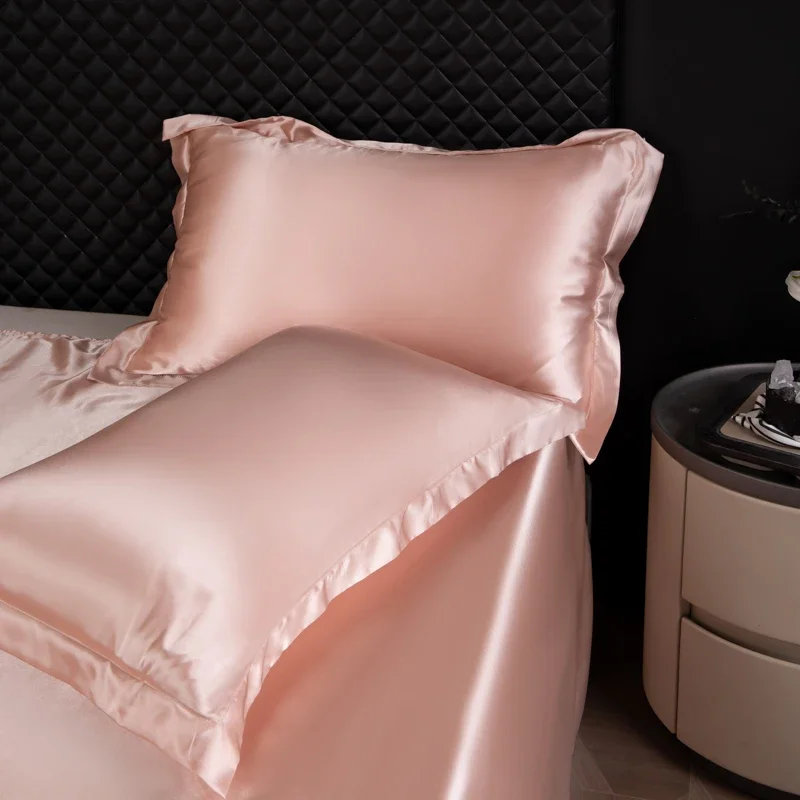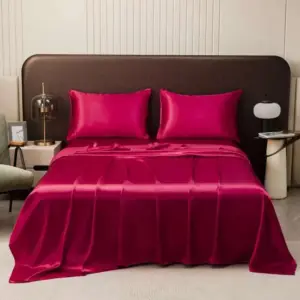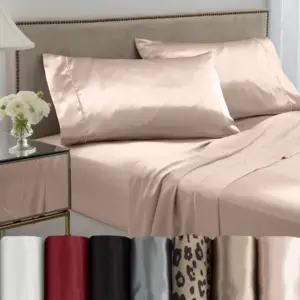The Science Behind Silk’s Exceptional Thermal Properties
Have you ever wondered why silk feels so different from other fabrics? The secret lies in its unique molecular structure. Silk is made up of two primary proteins—sericin and fibroin—which create a natural fiber unlike any other bedding material.
These protein fibers are arranged in a way that creates a natural thermal balance. Unlike synthetic materials that trap heat, silk’s smooth fibers distribute heat evenly across the surface. This even distribution means no more hot spots or cold patches as you sleep.
What makes silk truly remarkable is its microscopic structure. When examined closely, silk fibers contain tiny air pockets that work as natural insulators. These pockets trap warm air when it’s cold but allow excess heat to escape when temperatures rise. This natural structure explains why temperature regulation with silk sheets remains consistent regardless of the season.
Another fascinating property of silk is its hygroscopicity—a fancy word for its ability to absorb and release moisture. Silk can absorb approximately 30% of its weight in moisture without feeling damp. This moisture management is crucial for maintaining comfortable body temperature during sleep.
The science behind how silk sheets regulate temperature shows that this isn’t just luxury marketing—it’s backed by the natural properties of the fiber itself. Research indicates that silk’s thermal conductivity sits in a “sweet spot” between materials that feel too cold (like metal) and those that trap too much heat (like polyester). This makes silk uniquely suited for year-round comfort.
Silk’s Dual-Temperature Performance: How It Works
Cooling Properties: Why Silk Feels Refreshing in Summer
When summer heat arrives, silk bedding proves its worth through superior breathability. The natural protein structure of silk allows air to circulate freely between fibers, preventing the stifling sensation common with synthetic materials.
One of silk’s most impressive qualities is its moisture-wicking ability. It can absorb up to 30% of its weight in moisture—about 1.5 times faster than cotton. This means:
- Sweat is quickly drawn away from your body
- Moisture evaporates efficiently from the silk surface
- Your skin stays dry throughout the night
- Body temperature remains regulated even on hot nights
The initial cool-to-the-touch sensation you feel with silk sheets isn’t just your imagination. Silk has higher thermal conductivity than many other fabrics, which allows it to efficiently transfer heat away from your body when you first lie down. This creates that refreshing feeling that’s particularly welcome during warmer months.
Many people wonder if silk bedsheets are good in hot weather, and the evidence points to yes—silk’s natural properties make it an excellent choice for staying cool when temperatures rise.
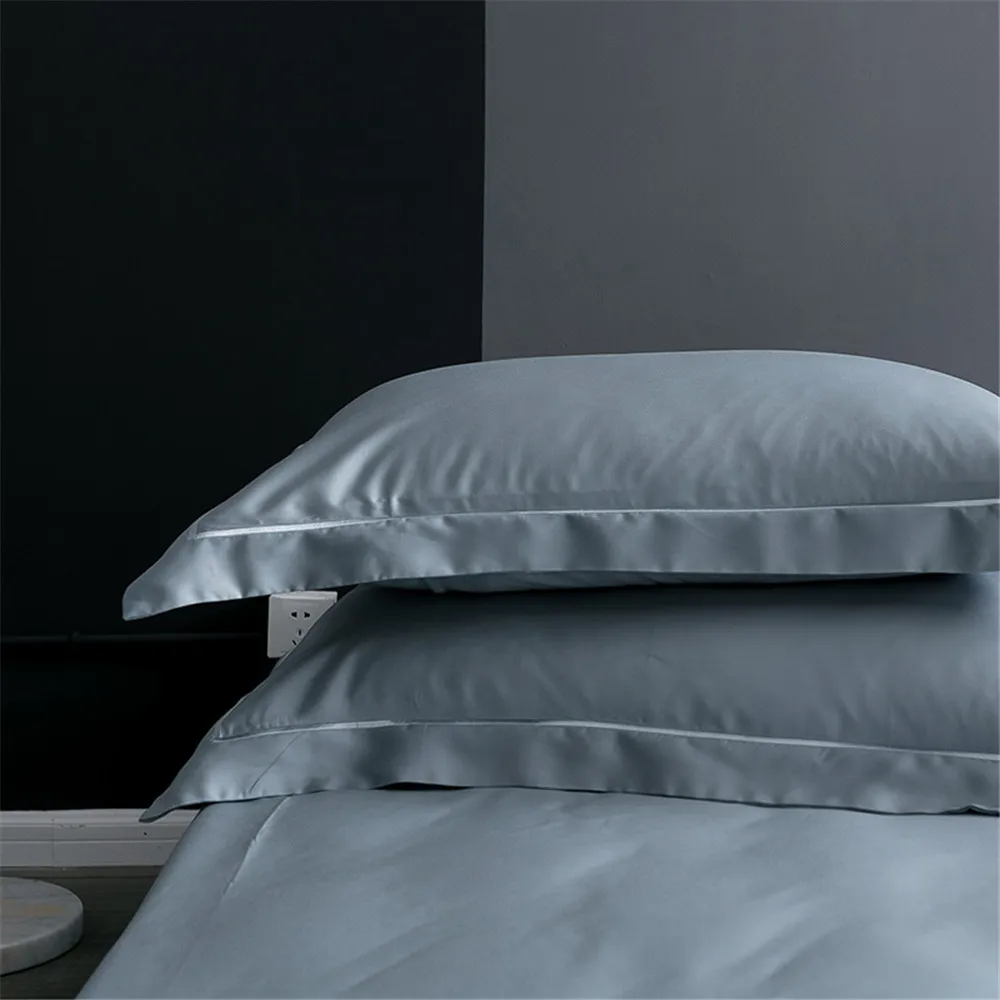
Warming Abilities: How Silk Keeps You Cozy in Winter
When temperatures drop, silk reveals its other remarkable talent—keeping you comfortably warm. The same fiber structure that cools in summer works differently in winter conditions:
- Natural insulation from thousands of microscopic air pockets that trap body heat
- Creation of a personalized microclimate that maintains warmth around your body
- Lightweight warmth that doesn’t feel heavy or restrictive
- Adaptability to fluctuating bedroom temperatures throughout the night
Silk maintains your skin temperature within about 4°F (2°C) of your ideal sleeping temperature. This happens because the density of air pockets in silk fibers is higher than in many other natural fibers, providing efficient insulation despite being remarkably lightweight.
Many people are surprised to learn that silk works equally well for temperature regulation in both hot and cold conditions, making it truly a year-round bedding option.
Momme Weight: The Key to Customized Thermal Comfort
When shopping for silk bedding, you’ll often encounter the term “momme weight” (pronounced “muh-mee”). This measurement refers to the density of the silk and plays a crucial role in determining its thermal properties.
Momme weight is measured by the weight in pounds of a piece of silk that is 45 inches by 100 yards. The higher the momme weight, the denser and more durable the silk—but this also affects its temperature regulation capabilities.
Different momme weights offer varying levels of thermal performance:
| Momme Weight | Cooling Properties | Insulation | Durability | Best For |
|---|---|---|---|---|
| Light (16-19) | Excellent | Moderate | Good | Maximum cooling, summer use |
| Medium (19-22) | Very Good | Good | Very Good | Year-round use, balanced properties |
| Heavy (22-25) | Good | Very Good | Excellent | Enhanced warmth, cooler climates |
| Ultra-heavy (25+) | Moderate | Excellent | Superior | Maximum insulation, winter use |
Sanctuary Soft specifically focuses on the 19-25 momme range because it offers the optimal balance between cooling properties, insulation, and durability. This weight range provides versatile temperature regulation properties that work effectively across all seasons.
The ideal momme weight for you depends on your personal temperature preferences, local climate, and whether you tend to sleep hot or cold. Those who experience night sweats might prefer the lighter end of the spectrum, while those seeking maximum insulation might choose heavier options.
Silk vs. Other Bedding Materials: Thermal Performance Comparison
When compared to other popular bedding materials, silk consistently stands out for its balanced thermal properties. Let’s see how it measures up:
| Feature | Silk | Cotton | Linen | Synthetic (Polyester) |
|---|---|---|---|---|
| Breathability | 5/5 | 3/5 | 4/5 | 1/5 |
| Moisture Wicking | 5/5 | 3/5 | 4/5 | 1/5 |
| Insulation | 4/5 | 3/5 | 2/5 | 5/5 |
| Weight/Feel | Light | Medium | Medium | Varies |
| Temperature Adaptability | 5/5 | 3/5 | 3/5 | 2/5 |
| Initial Touch Sensation | Cool | Neutral | Cool | Varies |
| Heat Retention | Balanced | Moderate | Low | High |
Unlike cotton that can feel too warm in summer or too cool in winter, silk maintains consistent performance year-round. The difference between silk and cotton bedding is particularly noticeable in how they handle moisture—silk wicks away dampness while cotton tends to absorb and retain it.
Linen performs well in hot weather but lacks silk’s insulating properties for cooler months. Synthetic materials like polyester often trap heat and moisture, creating uncomfortable sleeping conditions, especially for hot sleepers.
What truly sets silk apart is its adaptability. While other fabrics excel in specific seasons, silk provides comfort across all temperature ranges. This eliminates the need for seasonal bedding changes and makes it a versatile investment.
Who Benefits Most from Silk’s Thermal Regulation?
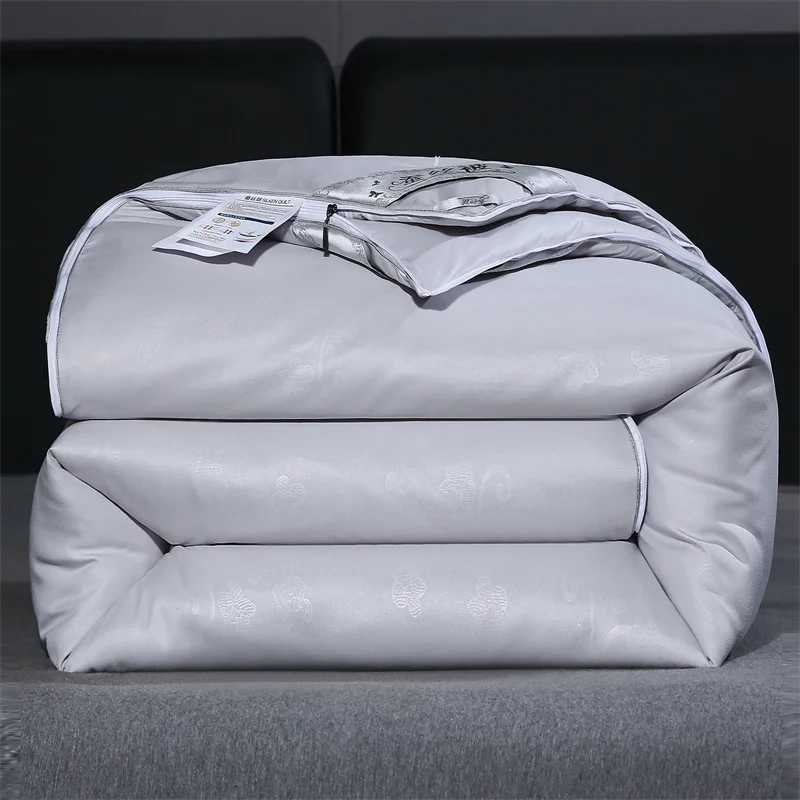
Silk’s remarkable temperature-regulating properties make it ideal for several types of sleepers:
Hot Sleepers benefit significantly from silk’s cooling properties. If you regularly kick off the covers or flip your pillow seeking the “cool side,” silk bedding helps maintain a comfortable sleeping temperature by efficiently drawing heat away from your body and allowing air circulation.
Those Experiencing Night Sweats or Hot Flashes find particular relief with silk bedding. Approximately 30% of adults experience night sweats at some point, and silk’s moisture-wicking properties help prevent night sweats by keeping skin dry and comfortable throughout the night.
Couples with Different Temperature Preferences often struggle to find bedding that suits both parties. With a typical temperature preference difference of 3-5°F (1.5-2.5°C) between partners, silk provides a happy medium by adapting to each person’s body temperature independently.
Year-Round Comfort Seekers appreciate not having to switch between summer and winter bedding. Silk’s dual-temperature performance means one set of bedding works effectively across seasons, simplifying linen closet organization and reducing the need for multiple bedding purchases.
Studies consistently show that sleeping in a temperature-regulated environment significantly improves sleep quality, which explains why many users report better rest after switching to silk bedding.
The Premium Choice: Mulberry Silk’s Superior Temperature Control
While several types of silk exist, Mulberry silk stands out as the gold standard for temperature regulation in bedding. This premium silk, produced by Bombyx mori silkworms fed exclusively on mulberry leaves, creates fibers with exceptional thermal properties.
What makes Mulberry silk special:
- Longer fibers (2-3 times longer than wild silk varieties), resulting in smoother fabric with fewer potential irritation points
- Higher protein content (approximately 97% compared to 80-85% in wild silk), enhancing its moisture-wicking capabilities
- More consistent fiber structure, allowing for better heat distribution
- Finer fiber diameter, creating a lighter weight fabric that still provides excellent insulation
These characteristics explain why our Mulberry silk bedding sets deliver superior temperature regulation compared to other options on the market. The exceptional quality of Mulberry silk allows it to respond more efficiently to body temperature changes and maintain optimal sleeping conditions.
The smoother texture of Mulberry silk (18-20 microns compared to 24-30 microns for wild silk varieties) also facilitates better heat dissipation, preventing the uncomfortable heat buildup common with rougher fabrics.
Weave Matters: How Fabric Construction Enhances Thermal Performance
The way silk is woven significantly impacts its thermal properties. Different weave patterns create varying levels of breathability, insulation, and moisture management.
Common silk weaves and their thermal characteristics include:
| Weave Type | Breathability | Durability | Feel | Best For |
|---|---|---|---|---|
| Charmeuse | Moderate | High | Very smooth, lustrous | Balanced thermal regulation |
| Habotai | High | Moderate | Lightweight, soft | Maximum cooling properties |
| Sateen | Moderate | Very high | Smooth, heavier | Enhanced insulation |
| Crepe de Chine | Very high | Moderate | Slightly textured | Superior breathability |
The ideal weave balances breathability with durability. Too loose a weave compromises longevity, while too tight a weave might restrict air circulation. Our cooling silk sheets use carefully selected weaves that optimize air flow while maintaining structural integrity.
Thread count also plays a role in thermal performance. While extremely high thread counts are often marketed as superior, they can actually reduce breathability. The optimal range for silk bedding is typically 400-600 thread count, which provides sufficient density for durability while maintaining excellent air permeability.
Preserving Silk’s Temperature-Regulating Properties: Care Guide
To maintain the temperature-regulating benefits of your silk bedding over time, proper care is essential. The protein structure that gives silk its thermal properties can be damaged by improper washing and storage.
Key care guidelines include:
- Wash in cold water (below 85°F/30°C) to preserve the protein structure
- Use pH-neutral detergents (pH 7-7.5) specifically formulated for silk
- Avoid bleach, enzyme-based detergents, and fabric softeners
- Air dry away from direct sunlight, or use a dryer on the coolest setting
- Store in a cool, dry place in breathable cotton bags, not plastic
Common care mistakes that compromise silk’s thermal regulation include:
- Using hot water, which denatures the protein fibers
- Exposing silk to harsh chemicals that break down its natural structure
- Wringing or twisting wet silk, which damages fiber alignment
- Storing in humid environments, which can lead to mildew
With proper care, silk sheets will maintain their temperature-regulating properties for many years, making them a wise long-term investment.
Debunking Common Myths About Silk’s Temperature Regulation

Let’s address some common misconceptions about silk’s thermal properties:
Myth: Silk always feels cold
Truth: Silk initially feels cool to the touch due to its thermal conductivity, but quickly adjusts to body temperature. Unlike the persistent cold feeling of synthetics, silk creates a comfortable microclimate around your body.
Myth: Silk traps heat like synthetic fabrics
Truth: Unlike polyester and other synthetics that can trap heat and cause overheating, silk’s natural fibers allow continuous air circulation. Studies show that synthetic fabrics retain 2-3 times more heat than silk under identical conditions.
Myth: Silk is only suitable for summer use
Truth: Silk’s dual temperature properties make it suitable year-round. Its moisture-wicking capacity (30% of its weight vs. 1-3% for synthetics) and natural insulation work effectively in both hot and cold conditions.
Myth: Silk and satin have the same thermal properties
Truth: Many people confuse silk (a natural fiber) with satin (a weave often made from polyester). While satin-weave polyester might look similar, it lacks silk’s breathability, moisture-wicking, and temperature-regulating properties. 100% silk sheets provide benefits that synthetic satin cannot match.
Understanding these differences helps explain why authentic silk bedding performs so differently from alternatives that may look similar but lack the natural thermal benefits.
Is Silk Bedding Worth the Investment for Temperature Comfort?
When considering the price of silk bedding, many wonder if the temperature-regulating benefits justify the cost. Looking at the value proposition:
- Longevity: With proper care, silk bedding typically lasts 2-3 times longer than cotton alternatives
- Reduced seasonal bedding needs: One set of silk bedding can replace multiple seasonal sets
- Improved sleep quality: Studies consistently link temperature-regulated sleep to better rest quality
The health benefits of temperature-regulated sleep include:
- Faster time to fall asleep
- Fewer nighttime awakenings
- Improved REM sleep periods
- Better cognitive function the following day
- Reduced stress levels from quality sleep
Rather than viewing silk bedding as a luxury expense, consider it an investment in your sleep quality and comfort. The ultimate guide to temperature-regulating sheets shows that while the initial cost is higher, the per-night cost over the lifespan of the product is often comparable to or lower than repeatedly replacing lower-quality alternatives.
Full-size Silk Sheets, King Size Silk Sheets, Queen Size Silk Sheets, Twin Size Silk Sheets, Washable Silk Sheets
Price range: $95.95 through $178.37 Select options This product has multiple variants. The options may be chosen on the product page100% Silk Sheets, Green Silk Sheets, King Size Silk Bedding Set, Mulberry Silk Bedding Sets, Queen Size Silk Bedding Set
Price range: $1,246.21 through $1,615.22 Select options This product has multiple variants. The options may be chosen on the product pagePink Silk Sheets, Twin Size Silk Sheets
$171.80 Select options This product has multiple variants. The options may be chosen on the product pageFull-size Silk Sheets, Pink Silk Sheets
$136.31 Select options This product has multiple variants. The options may be chosen on the product pageGrey Silk Sheets, Silk Sheet and Pillowcase Set
Price range: $88.20 through $146.64 Select options This product has multiple variants. The options may be chosen on the product pageBamboo Silk Sheets, Cooling Silk Sheets
Price range: $130.76 through $177.80 Select options This product has multiple variants. The options may be chosen on the product page
When factoring in the potential benefits of better sleep and year-round comfort, many find that silk bedding offers excellent value despite the higher upfront cost.
How to Test if Your Silk Bedding Has Proper Thermal Properties
To ensure you’re experiencing the full thermal benefits of genuine silk bedding, try these simple tests:
The touch test: Genuine silk will feel cool to the touch initially but warm up quickly when in contact with your skin. If it remains cold or immediately feels warm, it may not be pure silk.
The moisture test: Place a small drop of water on the fabric. Pure silk will slowly absorb the water, while synthetic alternatives will allow the drop to bead up or soak through immediately.
The breathability test: Hold the fabric up to your mouth and try to blow air through it. You should feel some resistance, but air should pass through. If no air passes or it passes too easily, the thermal regulation may be compromised.
The overnight test: The true measure of luxury silk bedding sets is how they perform during a full night’s sleep. You should feel comfortable throughout the night without significant temperature fluctuations.
Authentic silk with proper thermal properties will also have subtle irregularities—completely uniform appearance often indicates synthetic materials. The burn test (silk burns with the smell of burning hair) can confirm natural protein fibers, but we don’t recommend trying this with your bedding!
By understanding the science behind silk’s thermal properties and selecting high-quality products, you can transform your sleep experience with bedding that adapts to your needs year-round—keeping you cool in summer and warm in winter.

